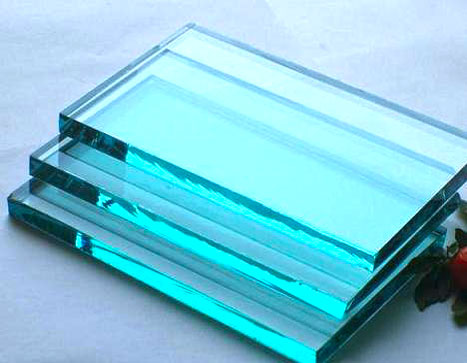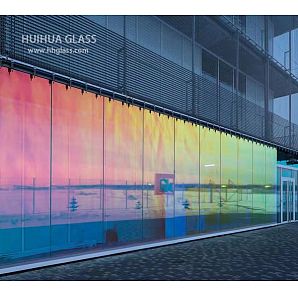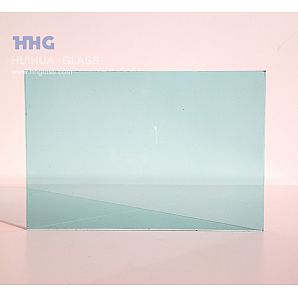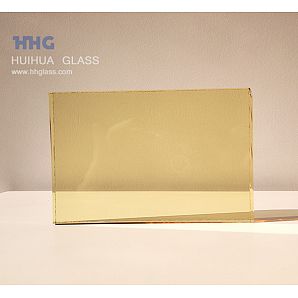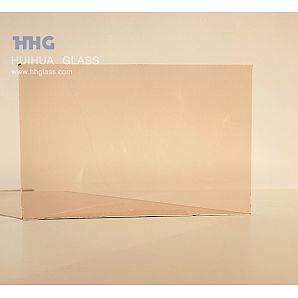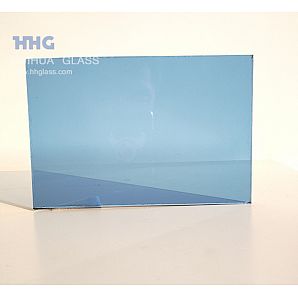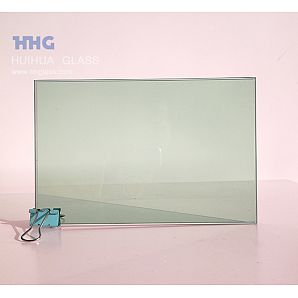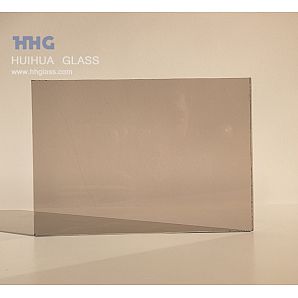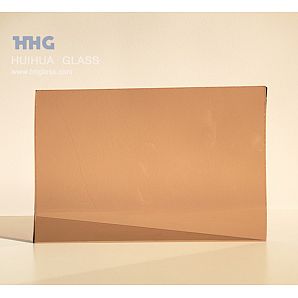Production Process:
The forming process of float glass production is completed in a tin bath with protective gas (N2 and H2). The molten glass flows continuously from the kiln and floats on the surface of the relatively dense tin liquid. Under the action of, the glass liquid is spread and flattened on the tin liquid surface, forming the upper and lower surfaces to be smooth, hardened, and cooled, and then led to the transition roller table. The rollers of the roller table rotate to pull the glass ribbon out of the tin bath into the annealing furnace. After annealing and cutting, flat glass products are obtained.
Float glass is manufactured in a float tank. The length of the entire production line is about 500 meters, and it can produce 650 to 700 gauge glass per day, which is equivalent to a glass ribbon with a width of 3 feet, a thickness of 3 mm and a length of about 25 kilometers. A float production line may cost 100 million pounds to build, so once production starts, it will be produced 24 hours a day, and will not be shut down for maintenance until about 10 years later. Float production is the main production of flat glass today. The process can be roughly divided into the following five stages:
1. Mixing of raw materials
The main raw materials of soda lime glass are about 73% silica sand, about 9% calcium oxide, 13% material materials and 4% magnesium. These raw materials are mixed according to the proportion, and then added to the recycled glass particles.
2. Melting of raw materials
The adjusted raw materials are heated in a 5-chamber kiln after passing through a mixing chamber, and become glass melt at about 1550 degrees Celsius.
3. Melting slurry and tin bed
The glass melt flows into the tin bed and (floats) above the tin paste. At this time, the temperature is about 1000 degrees Celsius. The glass melt on the tin bed forms a glass ribbon with a width of 3.21 meters and a thickness between 3MM and 19MM. Because the glass and Tin has a relatively different viscosity, so the (floating) glass molten paste above and the tin paste below will not mix together and form a very flat contact surface.
4. Cooling of glass melt
The temperature of the glass ribbon is about 600 degrees Celsius when it leaves the tin bed, and then enters the annealing chamber or continuous slow cooling furnace to gradually reduce the temperature of the glass to 50 degrees Celsius. The glass produced by this slow cooling method is also called annealed glass.
5. Quality control, cutting, storage
The glass after Xu Leng undergoes several stages of quality inspection, and then is cut into stock sizes of 6M*3.21M. These so-called (stock original sheets) can be cut, stored or shipped.